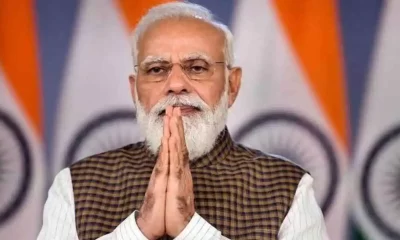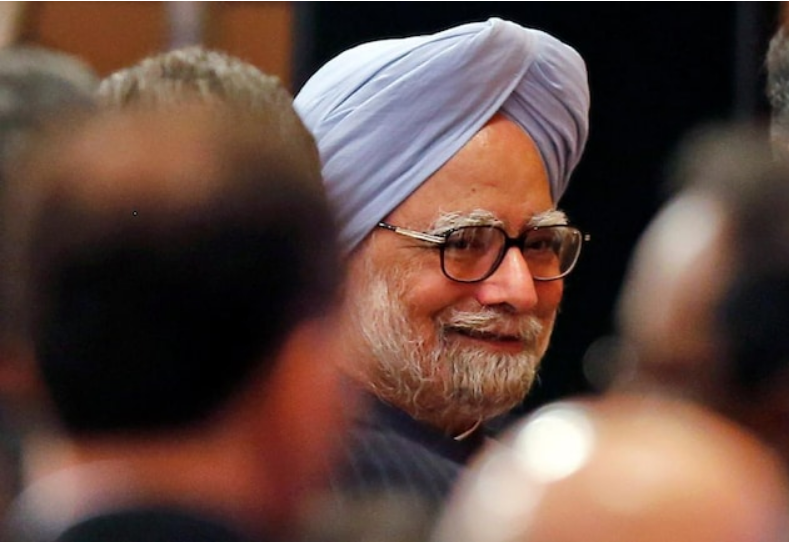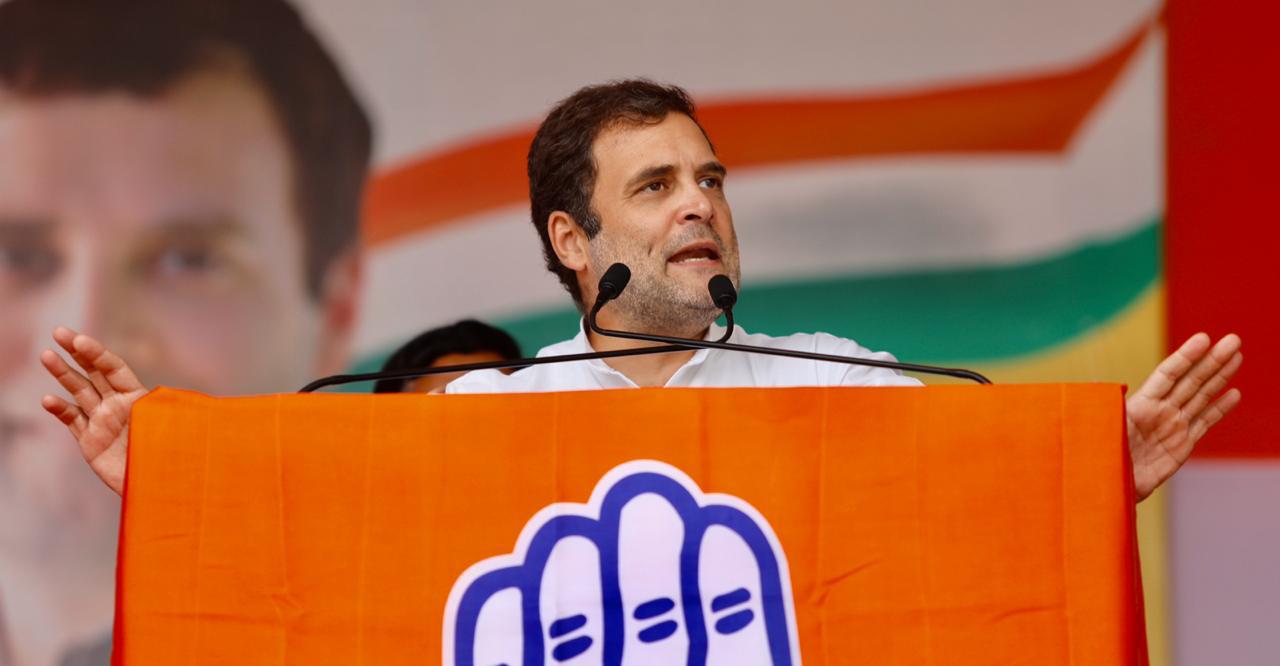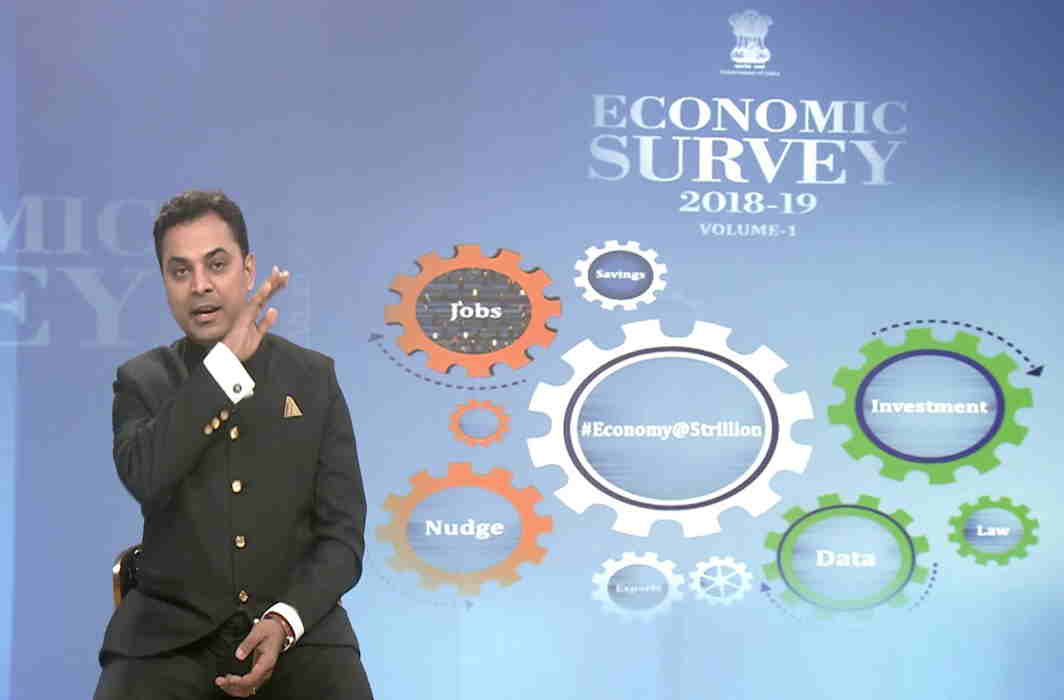MustRead
Mad Race for Maximum

It’s not just students, parents and schools but various education boards which are on an overdrive to secure 100 percent marks for students. This is an unhealthy trend that needs to be discouraged
By Meha Mathur
What happens when, after a year of nerve-wrecking hard work for entry to the exclusive 98 percent marks club, you miss the magical figure by a few marks? Or, you do manage to crash into that league but still don’t make it to the admission list of premier institutions in Delhi like St Stephens, Delhi, or Sri Ram College of Commerce (SRCC) just because the cut-off is 99 percent, or even 100 percent? The impact can be damaging to a young person’s psyche.
In recent years scores of students have experienced this fate. Take Akash’s case. When he secured a “measly” 95 percent and was deemed ineligible for admission to any of the prestigious and happening North Campus colleges in Delhi, it left him dejected to the core. He took a life-changing decision to not join any regular college and opted for a correspondence course along with preparing for a chartered accountancy exam. Another student who scored in the early 90s said there was a pall of gloom over her home. “It seemed someone had died. No one was talking to each other.”

While these and thousands of other students would be questioning themselves, wondering “what is wrong with me”, it’s the education boards that should also be put to scrutiny for the marking pattern they adopt. As recent media reports suggest, most of the boards—both state and central —are in competition mode. They want to ensure that their students should be in the race for admissions at all-India level. So much so that students of one single school—Bharatiya Vidya Bhavan in Erode, Tamil Nadu—managed to grab about 100 seats at the coveted SRCC.
“Boards are themselves under pressure to mark leniently. Given the fact that students need to secure admission in institutions of higher learning like IITs and central universities, if they mark strictly, the ultimate losers will be students. Low marks are leading to cases of suicides and depression. Which is why society is not questioning the current trend of lenient marking,” says Dr S Mahapatra, associate professor of Geography, Indira Gandhi National Open University, New Delhi.
Prof Binod Khadria , professor of Economics and Education at Jawaharlal Nehru University, agrees that the boards want to ensure their students gain maximum seats in engineering colleges and other institutions. There is also the competition to win over students from central boards. For schools too that is the motivating factor.
Beyond instant gratification
How do boards and schools achieve mind-boggling performances from their students ?
Miloni Sanghvi is a postgraduate student in communications studies at Xavier Institute of Communications (XIC), Mumbai, who has done her graduation in commerce from HR College and school education from the Maharashtra Board. She says a large number of students get 98 percent in the Maharashtra Board exams because they are trained or take coaching classes to become mark scoring machines . “These classes train you the fine points of answer writing—how to write in point form and what to underline. The entire focus is on answer writing, not on what you have understood about the subject.”
Miloni’s sister Vyoma, a class XII student of humanities at Xavier College, says this leads to the mentality that “this is the only way to write answers”. But she is realistic enough to understand that the golden run with marks won’t last in college. “I feel that when boards give such high marks, students think they have reached perfection. It leads to false expectations. And in college there is a big setback when marks drop.”

So, even young minds understand the dangers of chasing unrealistically high percentages. It manifests itself in a student’s shallowness about a given subject being exposed in later life and his/her inability to grasp and write logically. As Prof Mahapatra admits: “The flip side of this is that students, after scoring upwards of 90 percent in English, can’t draft an application. This trend holds true for any subject. And they lack the critical ability to think.”
It also perpetrates corruption and malpractices, as that iconic photograph of an examination center in Bihar, showing relatives and friends helping candidates, precariously perched from first and second floor windows, suggests.
Given this scenario what happens to quality of education? It’s not just that more often than not students who don’t really have the aptitude for a given course will get accommodated but seats are added in existing courses thus skewing the teacher-student ratio further. “There is as such a dearth of teachers. And you take in more and more students by giving them higher marks but not increasing capacity by recruiting teachers,” rues Prof Khadria.
No easy answers
Education being a concurrent subject, it’s difficult to come up with a solution that is agreeable to the states. No state board would want its students’ prospects jeopardized for the cause of quality and excellence. But even then, some form of standardization or parity between boards is required. One way, as Prof Khadria suggests, is to appoint members from other states on the state boards to ensure checks and balances.
But Dr Jayanti Banerjee, a psychology teacher with a Delhi school and a counselor with the CBSE, sees difficulties in establishing parity. “We have to take into account our country’s diversity. Children studying under state boards are not fluent in English, but in their mother tongue.”
Prof Khadria believes that to bring in accountability, we should start naming the people who man the various education boards. “The board itself is a faceless body. We have to think in terms of who are they. Start naming them and responsibility will come.”
Since the need to score higher stems from shortfall of quality institutions, the question that crops up is, why not have a better geographical spread of institutions of higher education? Several factors are at play here.
Prof Mahapatra says that despite the desired goal of spending 6 percent of the GDP on education, the spending doesn’t exceed 3 percent on the entire education sector. This impacts physical infrastructure and teachers’ availability even within existing public institutions, leave aside starting new ones. The big casualty is quality higher education institutions in the public sector.
But Prof Khadria adds another dimension to this issue: “We have been hearing of the need to open new universities in every nook and corner. To my mind that is against the very concept of university or higher education institutes. As such, our universities are smaller, compared to, say, China. It’s also against national integration. Think of students who are coming from villages to Delhi. They will grow so much in terms of their thinking.” Adding that geographical mobility is always good for growth, he says: “Why are Indian students going abroad? Can we open a Harvard here? Why should we?”
Ultimate beneficiaries
The race for marks and dire shortage of seats in public institutions has only benefitted private universities cropping up across the country, offering not just professional courses like medicine, engineering, law and design, but also liberal arts courses like history and English. And families with the wherewithal to spend Rs 10 lakh for such courses are happy to send their wards to such institutions with plush infrastructure.
There is no harm in these institutions if they maintain transparency, feels Prof Khadria. “If people with high salaries and can go for these courses, it will only reduce the burden on public institutions. And if these institutions, who get land at throw-away prices, offer scholarships to needy students, they will also be fulfilling their promise of social service. So don’t throw the baby with the bath water and say all private universities are bad.”
—With inputs from Prabir Biswas

MustRead
Pro and basic models in the iPhone 15 lineup may have more distinctions
According to reports, the sales fall for the current non-pro models is much greater than what Apple’s external environment had expected.

At the ‘Far Out’ event in September of this year, Apple unveiled the iPhone 14 series, which includes four new models. The iPhone 14 and iPhone 14 Pro were smaller models when they were first released by Apple, whereas the iPhone 14 Plus and iPhone 14 Pro Max had larger screens.
Early market indicators were indicative of weak demand for non-Pro models. According to a recent rumour, Apple is reportedly “extremely” worried about how the iPhone 14 Plus is selling and is trying to implement new marketing tactics to make up for it when the next iPhone series is released.
According to a recent story on the South Korean blog Naver, Apple is “seriously” contemplating new tactics for the future iPhone 15 lineup and is “seriously” considering how well the iPhone 14 Plus is selling. According to reports, the sales fall for the current non-pro models is much greater than what Apple’s external environment had expected.
First, Apple should think about lowering the price difference between pro models and entry-level devices. This is consistent with analyst Ross Young’s assertion that all iPhone models could get the Dynamic Island feature next year, which is now only accessible on iPhone 14 Pro models.
Future iPhone models’ pricing may also change, according to Apple, and “the price will be determined differently than it is currently.” It might lower the cost of the 2023 lineup’s Plus model. The starting pricing for the iPhone 14 Plus in India is Rs. 89,900. The starting price for the iPhone 14 Pro Max, in contrast, is Rs. 1,39,900.
Read Also: Covid-19: Uttarakhand makes masks mandatory in government, private schools
Ming-Chi Kuo, a well-known analyst, had already predicted that Apple would widen the gap between professional and non-professional iPhone models even more and include unique features in the iPhone 15 Pro Max. The business plans to raise the average selling price (ASP) of iPhone devices, according to Kuo.
The blog post also claims that there will be a clear distinction between the pro model and the max in terms of materials and camera components. This supports earlier rumours that stated the iPhone 15 Pro Max model would include a titanium chassis and a periscope zoom camera. It is anticipated that solid-state buttons would replace the traditional volume and power buttons on the high-end iPhone 15 devices.
The basic iPhone 15, iPhone 15 Plus, iPhone 15 Pro, and iPhone 15 Pro Max models are rumoured to be part of Apple’s 2023 iPhone portfolio. Apple’s upcoming A17 Bionic chip is anticipated to power the iPhone 15 Pro and iPhone 15 Pro Max. The A16 Bionic chip might be found in the non-Pro variants.
Argentina tourist who tested Covid positive at Taj Mahal goes missing
10 cocktail ideas to match your New Year’s Eve vibes
MustRead
Want to move on from your unworthy ex before Valentine’s Day? Name a cockroach after your ex and watch it eaten alive for just THIS much
As Valentine’s week nears, many couples are excited to celebrate their love and romance. However, this is not the case for everyone. A lot of people despise the concept of Valentine’s because of past relationship trauma and unworthy exes.

As Valentine’s week nears, many couples are excited to celebrate their love and romance. However, this is not the case for everyone. A lot of people despise the concept of Valentine’s because of past relationship trauma and unworthy exes. What if you were told that there is a way to get your cockroach of an ex eaten by animals, alive? No, this will not murder your ex in reality, but you will never find a better way to move on.
The San Antonio Zoological Society has come up with an idea for people to name a cockroach or rat after their ex-boyfriend or girlfriend. The event is called Cry Me a Cockroach, which is organised every year on Valentine’s Day. The society took to their Twitter handle and said that if people donate, their ex will be fed to an animal. They will also receive certificates.
There are some zoos in Pennsylvania, like Lehigh Valley Zoo, where people are allowed to name a bug after their former boyfriend or girlfriend. After this, these bugs are fed to their animals. All of this is done for just $5 or Rs 374.
Lehigh Valley Zoo came up with this brilliantly vicious, yet harmful idea, and took to their official Twitter handle to advertise. They said that they get it that sometimes, love sucks. So instead of feeling down that their love may not last forever, people should put a twist on Valentine’s Day and name a bug after their ex. They mentioned that all people have to do is to make a $5 donation to name one of the feeder crickets, and they will feed them to their ambassador animals. The offer is open till February 14, 2022.
This is not it. The Lehigh Zoo Website will also upload weekly videos on Facebook for people to see their ex’s big-avatar getting eaten.
Indeed, for every undeserving ex, there is a bug waiting to be eaten.
Featured
Ensure nutrition supplement ad wins hearts, Tweeple say video taught them a lot | WATCH
In this era of ads where some advertisements are really praised for their inclusivity while the others are being criticised, Ensure (an American brand of nutritional supplements) have also come up with a very heart touching advertisement in this festive season.

By Tarannum
In this era of ads where some advertisements are really praised for their inclusivity while the others are being criticised, Ensure (an American brand of nutritional supplements) have also come up with a very heart touching advertisement in this festive season.
The video is on fleek and it’s being liked and shared by people a lot on social media, soon it came out. Tweeple are appreciating and twitting this viral video with good compliments.
In this inspiring advertisement, we can see a man making a list of guests, asking her wife for one of his specific friends on the occasion of the festival but her wife denies informing him about the long list and work overload, the man then make her a cup of hot tea made of Ensure milk powder, saying that we should thank the people who took time for us when nobody did. This cute message is liked by the people and Twitter is flooded with appreciation posts with the hashtag StrongerInsideOut.
One person tweeted that this video taught him to come up front, help people and celebrate. Have a look :
The other Twitter user wrote about the amazing initiative of this video and appreciated this.
What is Ensure?
Ensure is an American for nutritional supplements and replacements for meals. This brand, Ensure is manufactured by Abbott Laboratories.
Read Also: Amazon updates Alexa: Now you can move music between multiple echo devices, here’s how to do it!
Ensure Original contains 220 calories, six grams of saturated fat, 15 grams of sugar, and nine grams of protein in a 237-ml (8-fl oz) bottle. Water, corn maltodextrin, sugar, milk protein concentrate, canola oil, and soy protein isolate are the top six ingredients in Ensure original. For people with lactose intolerance can also take this as Ensure is considered lactose-free.
-

 Entertainment23 hours ago
Entertainment23 hours agoAnushka Sharma enjoys birthday dinner with Virat Kohli, RCB team in Bengaluru
-

 Cricket news22 hours ago
Cricket news22 hours agoICC annual team rankings: India maintains top in place both white-ball formats
-

 Entertainment21 hours ago
Entertainment21 hours agoShaitaan OTT release: Ajay Devgn, R Madhavan starrer to premiere on Netflix tomorrow
-

 Cricket news4 hours ago
Cricket news4 hours agoIPL 2024: Kolkata Knight Riders beat Mumbai Indians by 24 runs
-

 LATEST SPORTS NEWS5 hours ago
LATEST SPORTS NEWS5 hours agoHamida Banu: Google Doodle celebrates India’s first woman wrestler
-

 India News1 hour ago
India News1 hour agoRahul Gandhi writes to Karnataka CM over Prajwal Revanna sex scandal, urges him to provide utmost assistance to the victims
-

 2024 Lok Sabha Elections2 hours ago
2024 Lok Sabha Elections2 hours agoPM Modi raises national security pitch to attack Congress, says Pakistan now weeping and screaming for help under BJP rule






